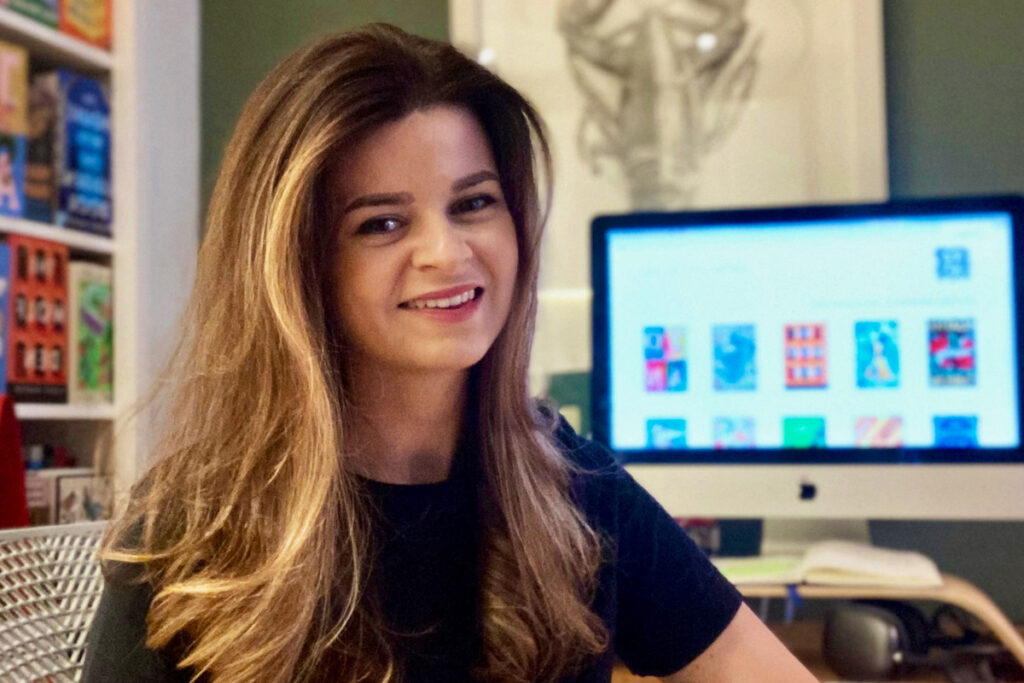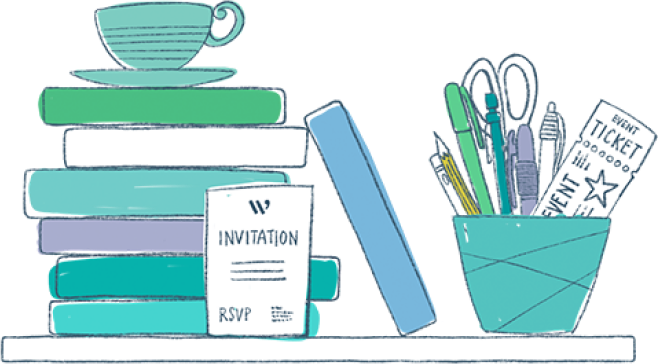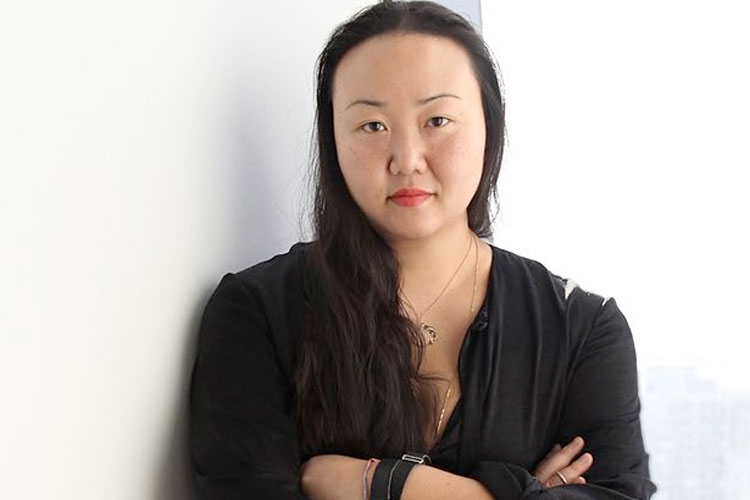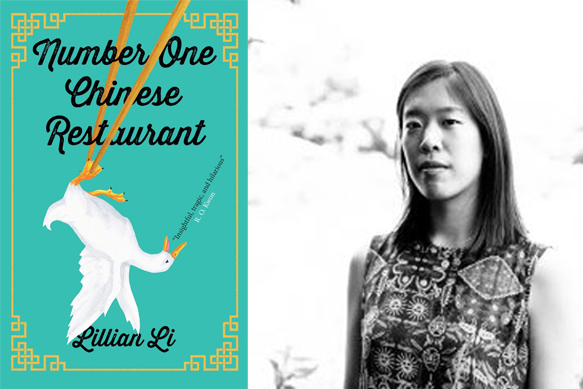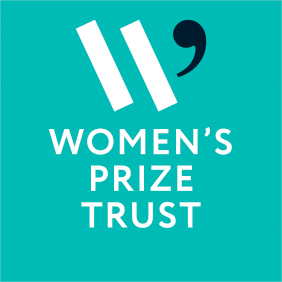At the Women’s Prize we love hearing about the brilliant, creative women working behind the scenes to produce the beautiful books that brighten up our bedside tables.
So we were thrilled collaborate with book cover designer Holly Ovenden to create the new Women’s Prize Book Bag. Holly’s artwork adorns the covers of books by iconic women writers including Elif Shafak, Agatha Christie, Avni Doshi and Deborah Levy – and we can guarantee you won’t leave a bookshop without glimpsing some of her trend-setting designs.
We sat down with Holly to find out about her journey into book cover design and where she finds her inspiration…
How did you get into book cover design? Is it something you always dreamed of doing?
I sort of accidentally (luckily!) stumbled across book cover design. My original degree was in health sciences, and after graduating and feeling unfulfilled at work for four years, I decided to retrain in graphic design. I had always loved art, and painted in my spare time. After finishing my design course, by chance, I came across a junior book cover designer job at Bloomsbury. I remember thinking – wow, dream job.
I designed book covers at Bloomsbury for four years before moving to Penguin General, a literary imprint of Penguin Random House. In March 2020, just before the global pandemic, I decided to go freelance and, although the timing wasn’t great, it has worked out well and I am so happy I made the leap. I now work for a range of large and independent publishers from around the world.
Tell us about a day in the life of a freelance book cover designer.
Everyday is different, and I think that’s what I enjoy. Some days I will be starting a new brief, reading through a manuscript and sketching ideas. Others I will be putting together the full layout of the book, thinking about finishes and paper stocks. I work on a range of titles, from adult fiction to non-fiction, including YA and also cookbooks. There are highs and lows that come with the job! The highs are where a cover design flies through the meeting and the author loves it, and lows where you may have to start over from scratch, as your designs didn’t hit the mark. It’s quite a rollercoaster.
How do you approach each project? Do you always try to read the books you are designing?
When I am sent a new brief, I like to start a fresh page in my sketchbook. I pick out key words from the brief and then tend to dive into the manuscript – if it’s available. I don’t generally have time to read the entire book; I tend to speed read through a couple of chapters at a time looking for detailed paragraphs, dialogue, descriptions, ideas, feelings. I scribble ideas that come to mind, sketching thumbnail designs as I go. I sometimes wake up in the middle of the night and have to scribble down concepts (which is a bit weird!) so I keep a notepad on my bedside table.
What do you do when inspiration isn’t flowing?
I think every designer goes through periods of inspiration and creative blocks. When I feel a bit lost, I tend to go on a walk. I live in Kent and I am lucky enough to have the countryside close by. I find a lot of my inspiration comes from the natural world. I take photos of things that I might want to use as reference such as colour palettes, textures, organic shapes, patterns. I think moving away from a screen is important, it gives you a renewed perspective.
What is your favourite medium to work in?
Most of my illustration work now is digital, I started off illustrating using my Wacom tablet maybe six years ago and more recently I use an iPad. I do still enjoy sketching out ideas by hand, and it’s refreshing to get away from my Mac and play around with inks and paints, and experiment with textures and papercuts.
What would you be if you weren’t a book cover designer?
I would love to set up and work as a chef in a café/restaurant with its own kitchen garden.
What is your favourite book from the Women’s Prize library and why?
Wow, there are too many to choose. When I worked in-house at Penguin General, I had the opportunity to redesign and illustrate the cover of Helen Dunmore’s A Spell of Winter for the Penguin Essentials series. The writing is so captivating and gripping, full of vivid imagery. A really spellbinding and gripping novel – I loved it. Also Hamnet by Maggie O’Farrell was stunning.
What’s your favourite book cover ever?
Tough one – it changes all the time! I really love the cover for Sheila Heti’s Pure Colour, designed by Na Kim. Also the UK Faber edition of Miriam Toews Fight Night has a stunning cover, designed by Anna Morrison.
Working as a freelance independent designer, what are the joys and what are the challenges?
As a freelance designer, I do really enjoy my own space. Having the freedom to work on exciting projects from different publishers, working with a range of art directors and authors. I love working from my home studio with my two cats, which I think might be because I am an introvert at heart! However I do miss the social aspect of working in-house, the feeling of being part of a team. When I first started out as a freelancer, I felt a little apprehensive about sending my first round designs to art directors, but I have since learnt to trust my instincts as a designer and illustrator – confidence slowly builds over time.
What advice would you give any aspiring artists trying to get into book cover design?
In the age of Instagram, I think it’s great to showcase your artwork on social media, but also have a portfolio website as well, as it acts like a professional extension of you and your work and helps when potential employers google your name. It’s also great when artists/illustrators can show they understand the connection and visual relationship between type and image, as that is at the heart of book cover design. Also don’t be afraid to reach out to established book cover designers/ illustrators/ art directors for feedback or advice.
